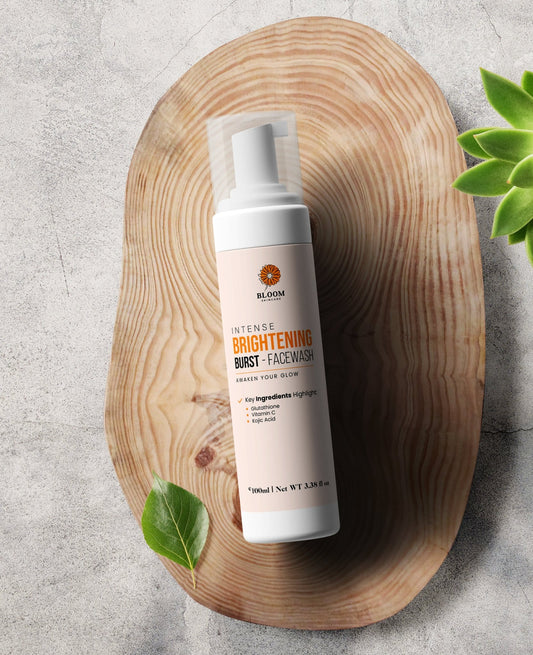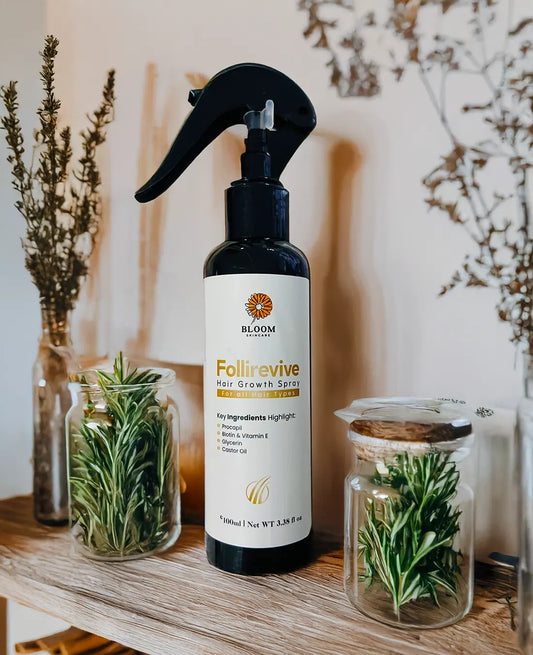Sunblock is your skin’s first line of defense against sun damage, premature aging, and skin cancer, but what if it’s also the reason your skin feels tight, flaky, or irritated? For many people, applying sunscreen comes with an unexpected downside, which is obviously dryness.
The good news is you don’t have to choose between protecting your skin from harmful UV rays and keeping it soft, supple, and healthy. In this guide, we’ll break down exactly why some sunscreens dry out your skin, and how to apply them properly without sacrificing hydration. Let's start!
Why Sunblock Is Important for Your Skin
Using sunblock daily is one of the most effective ways to protect your skin from long-term damage. The Tinted Sun Block with SPF 60 acts as a barrier against harmful ultraviolet (UV) rays, which are responsible for sunburns and premature aging. By applying sunscreen consistently, you're not just preserving your skin’s appearance but also protecting its health at a cellular level.
For individuals using active skincare ingredients like retinol, AHAs, or vitamin C, sunscreen is even more essential. These ingredients can increase the skin's sensitivity to sun exposure. No matter your age or skin type, incorporating SPF into your daily routine is one of the smartest skincare decisions you can make.
Common Concerns About Sunblock and Dry Skin
Despite its many benefits, lightweight sunblock for the face often gets a bad reputation for causing dryness or irritation, especially for those with already sensitive or dry skin. Many traditional formulas contain ingredients like alcohol, certain preservatives, or mineral filters like zinc oxide and titanium dioxide that can leave the skin feeling tight and dehydrated.
This has led some people to skip sunscreen altogether, thinking it will worsen their skin issues. But the problem often lies in the type of product being used, not in the act of using sunscreen itself. When chosen wisely and applied correctly, sunblock can actually support your skin barrier rather than disrupt it.
Don’t skip sun protection, grab your sunblock and cart it now!
Step-by-Step Guide on How to Apply Sunscreen
Applying sunscreen may seem simple, but doing it the right way makes all the difference in both protection and how your skin feels throughout the day. Follow these tips to get the most out of your SPF without drying out your skin.
1. Start with Moisturized Skin
Cleanse your face gently to remove dirt, oil, and sweat. Then, apply a hydrating moisturizer first, especially if your sunscreen isn’t very moisturizing. This helps prevent dryness and creates a smoother base for your SPF.
2. Choose the Right Sunscreen
Use broad-spectrum SPF 30 or higher. Make sure it suits your skin type, such as hydrating for dry skin, lightweight sunblock for oily skin, and fragrance-free for sensitive skin.
3. Apply the Right Amount
For your face and neck, use about a nickel-sized amount, roughly one and a half teaspoons.
4. Don’t Rub Aggressively
Gently pat or smooth sunscreen into your skin. Avoid rubbing too harshly, which can irritate the skin or cause the product to pill.
5. Reapply Every 2 Hours
Sunscreen wears off with time, sweat, and exposure. Reapply every 2 hours, especially if you’re outdoors, sweating, or swimming. Use Sunbuddy Matte Guard SPF 40 sunblock for daily use or a stick for convenient reapplication over makeup or on the go.
Understanding Different Sunblock Formulas
The formula you choose matters just as much as the ingredients. Let's understand different types of sunblocks and how they benefit your skin:
Cream-based sunscreens: They tend to be the most hydrating, making them ideal for dry or mature skin. These formulas are usually thicker, creating a protective layer that locks in moisture throughout the day.
Lotions: They offer a slightly lighter texture but can still deliver solid hydration and are a good all-around choice for daily use. With the right sunblock lotion, proper techniques, and a little skin preparation, you can lock in moisture while staying shielded from the sun.
Gel-based sunscreens: If you have oily or acne-prone skin, you may prefer this type of sunscreen due to its lightweight feel and quick absorption. However, this sunblock for face contains essential SPF’s and suits best if you have dry skin.
Spray sunscreens: They often lack moisturizing properties and can be drying due to the propellants used in the formula. They’re best used for quick reapplication on the body rather than as your main face sunscreen.
How to Choose the Best Sunblock for Face
If you’re facing dryness after applying sunscreen, it might be time to take a closer look at what’s inside your sunblock. Not all SPF products are created equal; some contain hydrating ingredients that work double duty by protecting your skin from UV rays and locking in moisture.
Look for sunscreens that include skin-loving components like hyaluronic acid, glycerin, aloe vera, squalane, and ceramides. These ingredients help replenish hydration and strengthen your skin barrier, making your SPF feel more like skincare than just protection.
Also, avoid formulas with drying alcohols, added fragrance, or unnecessary preservatives if your skin is sensitive or prone to dryness. Mineral sunscreens with added emollients can be particularly soothing, while chemical sunscreens can also be hydrating when paired with the right base ingredients.
Conclusion
Sunscreen is one of the most valuable tools in any skincare routine, and with BloomSkincare’s dermatologist-recommended options, you don’t have to compromise on hydration while protecting your skin. By choosing the right formula and applying it daily, you can shield your skin from harmful UV rays, prevent premature aging, and maintain a healthy, radiant glow. Remember, healthy skin is always protected skin, whether it’s sunny, cloudy, or even rainy, making sunscreen a daily habit with BloomSkincare is a simple yet impactful way to care for your skin with both comfort and protection.







